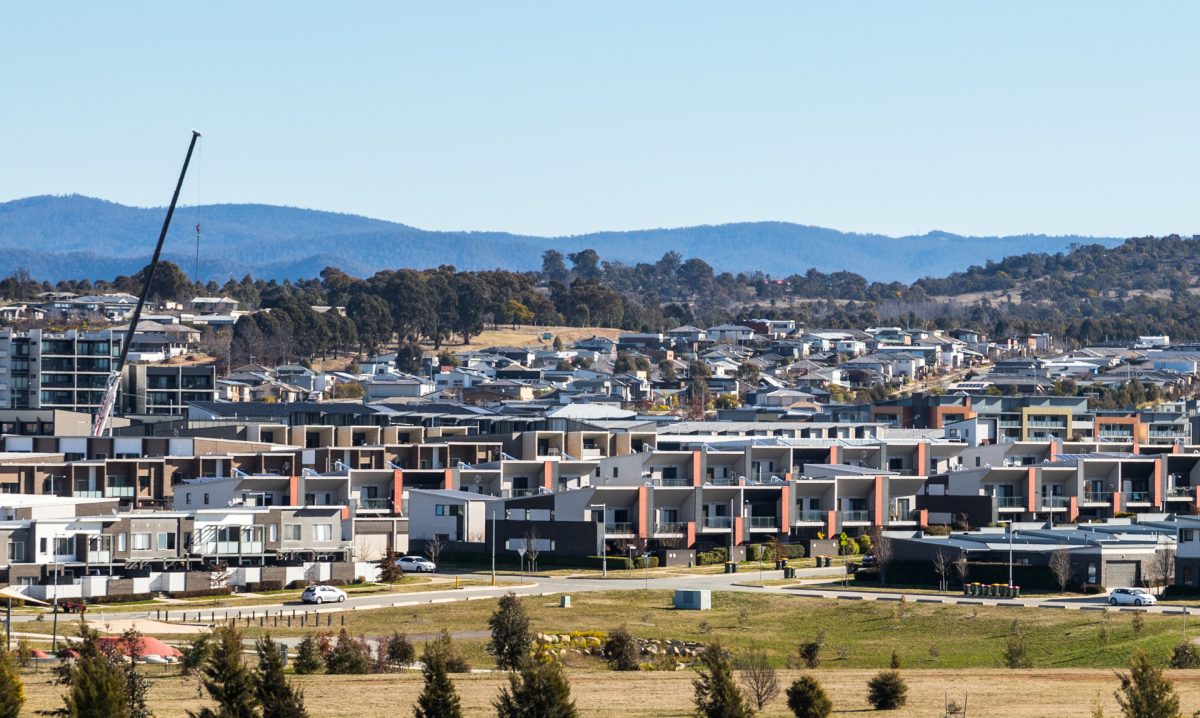
The ACT Government urgently needs to address infill, says Peter Cain. Photo: Michelle Kroll.
The Labor-Greens government’s new infill policies are weak, lacking in ambition and will not help solve the housing crisis.
The Canberra Liberals and the Labor-Greens government’s policies on development within RZ1 zoned land appear similar but are actually significantly different with respect to two key elements: a broader choice for landowners and a wider housing range for the market.
Prior to the recently announced changes by the government, on RZ1 zoned land in the ACT the Crown lease holder was allowed to build a single residence. On parcels larger than 800 sqm a secondary residence up to 90 sqm could be built, but without the option of subdivision.
According to government data provided to me in October this year, there were almost 45,000 such parcels in the ACT, with the majority, just over 28,000, sized between 800 sqm and 1000 sqm.
This means that there were about 16,500 parcels greater than 1000 sqm. Given the government’s priority for releasing relatively small RZ1 parcels in new areas such as the Molonglo Valley, these numbers would not be significantly different from the current date.
As such, splitting the title of a (say) 1000 sqm parcel would provide two parcels, possibly 500 sqm each, depending on site features, that would conform with the current land release strategy for newly zoned RZ1 areas.
A policy that the Canberra Liberals took to the 2020 election, and to which we remain committed, is to allow the owner of such larger parcels to separately title, or unit title, the land and construct a second dwelling. In recent changes to the Territory Plan, the Labor-Greens government has provided a weak, almost embarrassingly incompetent version of this policy.
Under the new Labor-Greens policy, the owner of these larger parcels would only be able to unit title the parcel, with a cap of 120 sqm on the new dwelling, i.e. will require setting up of body corporate, strata levies, etc. This inferior version of the Canberra Liberals’ policy is deficient in two key areas.
Firstly, the size limit of 120 sqm means that the government says all you can build is a small townhouse – barely bigger than a standard two-bedroom unit. Their policy prohibits the construction of standard-sized homes. While this may suit down-sizing empty-nesters and childless couples, it serves as a hindrance for families needing more space but unable to break into the market.
When so many RZ1 blocks are quite large, e.g. 3511 over 1400 sqm, this policy is simply deficient and a missed opportunity to solve the housing crisis.
Secondly, it prevents the landowner from separately titling the land, limiting them to a unit title accompanied by obligations under the Unit Titles (Management) Act 2011. This also denies the market a freshly tilted parcel, a more attractive market option.
The Canberra Liberals RZ1 infill policy will allow separate titling of secondary dwellings and allow the construction of standard-sized houses. It will be a policy that will create extra supply and genuine housing choice – not some glib slogan about “housing choices”.
The Liberals’ policy will increase the variety of housing available to the market, while preserving existing guidelines around canopy cover and permeable surface areas.
Infill is the great opportunity waiting to be seized to solve the housing crisis without doing any damage to our beautiful bush capital and its unique suburban character.
It is an opportunity an Elizabeth Lee-led Canberra Liberals government will seize with an urgency that suggests we actually want all Canberrans to have a safe, secure roof over their heads.
Peter Cain MLA is Shadow Minister for Planning and a Liberal MLA for Ginninderra





















